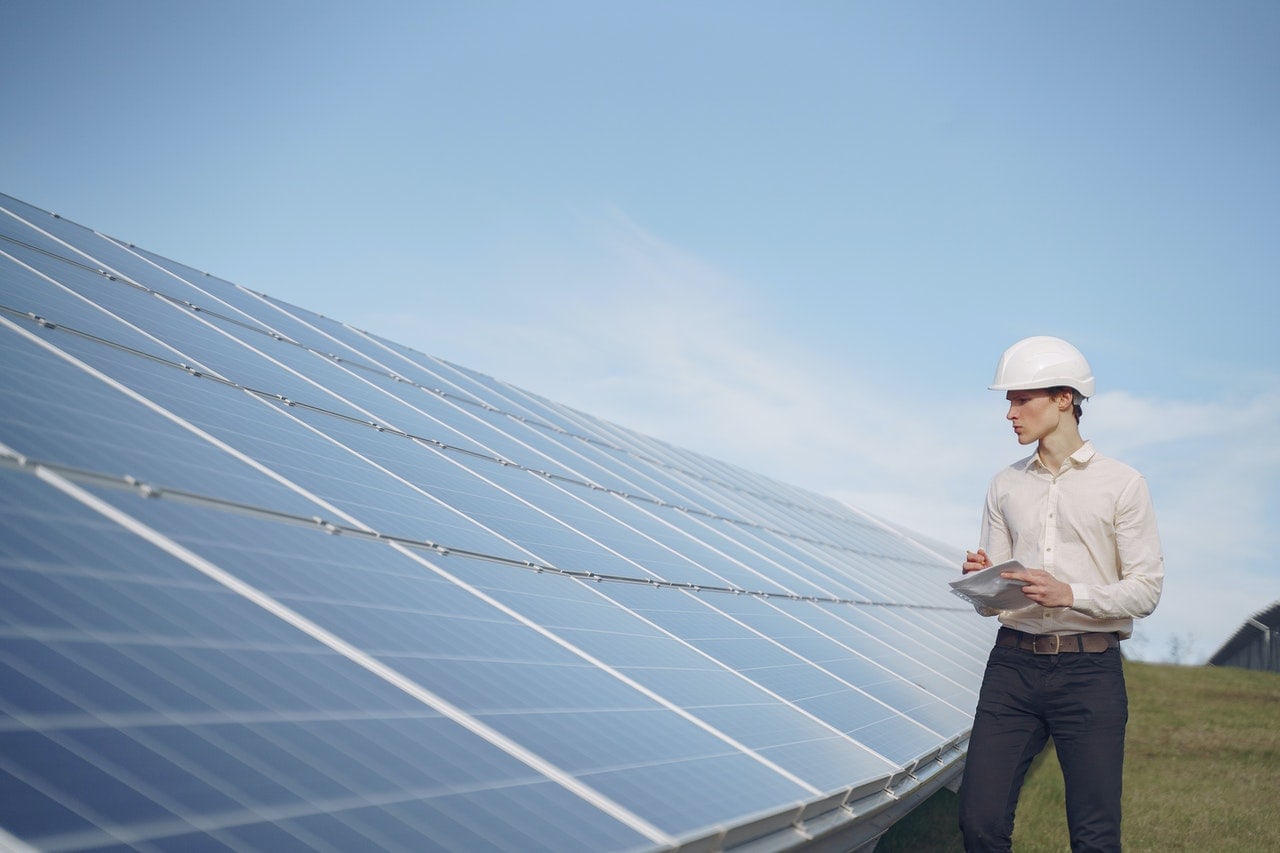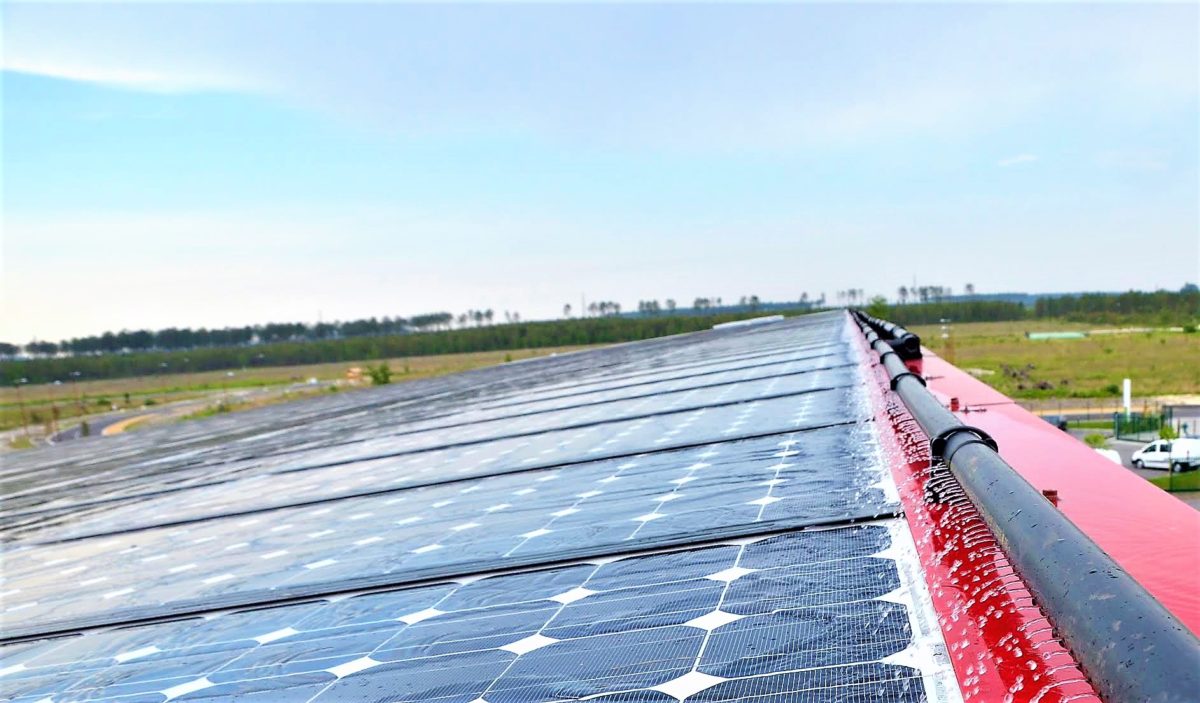5 Ways To Keep Solar Panels Cool
To keep solar panels cool and maintain efficiency, ensure proper airflow with 6-inch ground clearance, install light-colored reflective roofing to reduce heat absorption, use water-cooling systems (sparingly to avoid mineral buildup), apply anti-soiling coatings to prevent dust insulation, and consider bifacial panels that dissipate heat better.
Shade Panels Slightly
Solar panels work best at around 25°C (77°F), but on a hot summer day, rooftop temperatures can exceed 65°C (149°F), causing efficiency to drop by 10-25%. A 2023 NREL study found that for every 1°C above 25°C, panel output decreases by 0.3-0.5%. If your system normally produces 5 kW, extreme heat could cost you 500W to 1.25 kW in lost power—enough to run a refrigerator or several LED lights.
Partial shading can actually help in hot climates. Research from the University of New South Wales shows that 10-20% shading (like from a mesh or strategically placed structures) can lower panel temperatures by 8-12°C, recovering 3-5% efficiency while only reducing total sunlight by 1-2%. The key is diffused shade—not heavy blocking. A 30% shade cloth mounted 2-3 feet above panels in Arizona reduced operating temps by 11°C, increasing daily output by 4.7% compared to unshaded panels in the same heat.
The cheapest way to shade panels is with aluminum mesh screens (50-80% light transmission) installed on adjustable frames. These cost 0.50−1.20 per square foot and last 8-12 years. In a 6 kW system, covering 300 sq ft of panels would run 150−360 upfront. More advanced options include pergolas with spaced slats (4-6 inch gaps), which provide dappled shade while allowing airflow. A 10x12 ft solar pergola costs 2,000−4,000 but doubles as usable outdoor space.
Timing matters—shading is most effective from 10 AM to 4 PM when irradiance exceeds 800 W/m². In Phoenix, a retractable shade system deployed only during peak heat hours (12 PM-3 PM) boosted annual yield by 3.2% without significant light loss. Avoid permanent shading structures unless you’re in consistently hot regions (90+°F for 5+ months/year).
For ground-mounted systems, tall grasses or shrubs planted 6-8 ft away create natural afternoon shade. A UC Davis trial found that 3-4 ft tall vegetation reduced panel backside temps by 5-8°C in California’s Central Valley, improving midday output by 2.1% from June to September. Just keep plants trimmed to avoid overgrowth blocking more than 15% of the array.
Angle adjustments can also help. Tilting panels 5-10° steeper than your latitude reduces direct sun exposure by 7-12% in summer, lowering surface temps 3-5°C. In Texas, a 35° tilt (vs. the standard 28°) decreased thermal losses by 1.8% annually while increasing winter output due to better sun capture.
The ROI depends on your climate. In moderate zones (avg. summer temps <85°F), shading isn’t worth the effort—maybe 0.5-1% gain. But in Arizona, Nevada, or Southern Spain, where panels regularly hit 50-60°C, a $200 shading setup on a 6 kW system can pay back in 2-3 years via saved energy.

Leave Air Gaps Underneath
Solar panels get hot—really hot. On a 90°F (32°C) day, rooftop panels can hit 140-160°F (60-71°C), cutting efficiency by 12-20% due to thermal losses. But research from Fraunhofer ISE shows that just a 4-inch air gap between panels and the roof can drop operating temps by 9-14°F (5-8°C), recovering 3-5% power output. For a 10 kW system, that’s an extra 300-500 watts during peak sun—enough to run a gaming PC or charge an EV for 15-20 miles.
The physics is simple: Hot air rises, and if trapped under panels, it creates an insulating layer that bakes the cells. A 2024 study by NREL found that flat-mounted panels with zero clearance reached 167°F (75°C) at noon, while those with 6-inch gaps stayed at 143°F (62°C)—a 24°F (13°C) difference that boosted daily energy yield by 4.1%.
Climate Type | Recommended Gap | Temp Reduction | Efficiency Gain | Best Mount Type |
Hot & Dry (Arizona, UAE) | 6-8 inches | 10-16°F (6-9°C) | 4-6% | Elevated rails |
Temperate (California, Spain) | 4-6 inches | 7-12°F (4-7°C) | 2.5-4% | Standard tilt mounts |
Humid (Florida, Singapore) | 6+ inches | 8-14°F (5-8°C) | 3-5% | Corrosion-resistant racks |
Cold (Canada, Norway) | 2-4 inches | 3-6°F (2-3°C) | 1-2% | Low-profile mounts |
Costs vary wildly. Basic 1-inch rails cost 0.30−0.50 per watt, but upgrading to 6-inch adjustable legs adds 0.10−0.15/W. For a 7 kW system, that’s 700−1,050 vs. 2,100−2,450—but the extra airflow pays back in 5-8 years in hot regions.
Roof material matters too. Metal roofs reflect heat and need smaller gaps (3-5 inches), while asphalt shingles absorb infrared and require 6+ inches. A 2023 Texas A&M experiment showed that dark shingles with 2-inch gaps let panels hit 158°F (70°C), but 6-inch gaps + white reflective coating kept temps at 136°F (58°C)—a 22°F (12°C) drop that improved output by 5.3%.
Wind plays a role. Even 5 mph breezes can enhance cooling by 30-50% over stagnant air. In Colorado, arrays with open-ended racking (no side skirts) saw 8°F (4.5°C) lower temps than closed designs because crosswinds flushed out hot air. If your site gets 10+ mph winds daily, you can safely use smaller gaps (3-4 inches) and still get 90% of the cooling benefit.
Dirt buildup kills airflow. Panels mounted less than 3 inches above roofs collect 40% more dust and leaves, which further insulate heat. Cleaning these tight spaces costs 100−300/year for professional service. In contrast, 6-inch gaps stay 80% cleaner and only need 1-2 cleanings annually.
For ground mounts, 18-24 inch clearance is ideal. A Duke Energy test found that 12-inch gaps led to 11°F (6°C) higher temps vs. 24-inch gaps in North Carolina summers. The taller mounts cost 15-20% more but prevent vegetation interference and improve access for maintenance.
Use Light-Colored Roofs
Solar panels don’t just absorb sunlight—they also soak up heat radiating from your roof. A dark asphalt shingle roof in summer can hit 180°F (82°C), heating panels from below and slashing efficiency by 8-12%. But a light-colored or reflective roof stays 40-60°F (22-33°C) cooler, creating a 5-9% power boost for the same panels.
Case in point: A 2023 LBNL study compared identical 6 kW systems in Phoenix—one on a white TPO roof (solar reflectance 80%), the other on black EPDM (reflectance 6%). The white roof kept panels 17°F (9.4°C) cooler, increasing annual output by 1,100 kWh (7.3%). That’s **220/yearsaved∗∗at0.20/kWh.
The "cool roof" effect works best in hot climates (85°F+ avg. summer temps). In Miami, switching from dark brown tiles (reflectance 25%) to light gray (reflectance 60%) dropped panel operating temps by 12°C, recovering 4.1% efficiency. The math is simple: Every 10% increase in roof reflectance lowers panel temps by 2-3°C, worth 0.5-1% more power.
Costs vary by material:
· White acrylic coating (0.50−1.20/sq ft) adds 50-75% reflectance to existing roofs
· Metal roofs with reflective paint (3.50−7/sq ft) hit 75-90% reflectance
· Clay/concrete tiles naturally reflect 40-60% if light-colored
A 2,000 sq ft roof recoated with white elastomeric costs 1,500−3,000 but cuts AC bills by 15-20% while boosting solar yield. The combined savings often pay back in 4-7 years.
Warning: Don’t expect miracles in mild climates. In Seattle (avg. summer 75°F), a white roof only improves solar output by 1-2%—better to invest in more panels instead.
Pro tip: If you can’t replace your roof, installing panels 6+ inches above dark surfaces with aluminum-faced underlayment ($0.30/sq ft) reflects 50% of heat downward. A Texas installer measured 5°C cooler panels using this trick on black modified bitumen roofs.
Install Water Spray System
When solar panels overheat, their efficiency drops—but spraying them with water can lower surface temps by 15-25°C (27-45°F) in minutes, recovering 5-12% lost power. A 2024 study in Dubai showed that intermittent water cooling (2-minute sprays every 30 minutes) boosted a 10 kW system’s daily output by 8.3 kWh (9.1%) during 45°C (113°F) heatwaves.
System Type | Water Usage (L/day per m²) | Temp Drop (°C) | Efficiency Gain | Cost ($/kW) | Payback Period |
Basic Drip Line | 4-6 L | 8-12°C | 3-5% | 120−200 | 3-5 years |
High-Pressure Misting | 10-15 L | 15-20°C | 6-9% | 300−500 | 4-7 years |
Hybrid PVT (Water-Cooled) | 20-30 L | 20-25°C | 10-12% | 800−1,200 | 6-10 years |
Recycled Greywater System | 5-8 L | 10-15°C | 4-7% | 400−700 | 5-8 years |
The key is timing. Spraying between 11 AM and 3 PM—when panel temps peak—yields 80% of the cooling benefit while using 50% less water than all-day operation. In Arizona, a smart misting system with temperature sensors reduced water consumption by 62% compared to scheduled sprays, while still achieving 7.2% more energy output.
Water quality matters. Hard water (>200 ppm minerals) leaves scaling deposits that reduce panel transparency by 1-2% per year. A $50 inline filter prevents this, but in high-mineral areas, distilled or rainwater works better.
Installation costs vary:
· DIY drip kits (0.30−0.50/W) work for small systems (<5 kW)
· Professional misting setups (0.80−1.20/W) include pump controls and sensors
· PVT hybrid systems (1.50−2.50/W) recover heat for domestic hot water
Maintenance is critical. Nozzles clog every 6-12 months in dusty regions—cleaning adds 50−100/year. Systems without auto-drain valves freeze and crack below 0°C (32°F), requiring 200−400 in winterization.
Best for arid climates: In Las Vegas or Riyadh, water cooling pays back fastest (3-4 years). But in humid Houston or Bangkok, the 2-3% efficiency gain rarely justifies the cost.
Pro tip: Pair sprays with light-colored roofs—the combo can double the cooling effect. A Saudi test showed water cooling + white reflective coating improved output by 14.7% vs. 7.9% for sprays alone.
Clean Dust Off Regularly
Dust isn’t just dirty—it’s expensive. A 0.1mm layer of dust on solar panels can slash efficiency by 5-8%, and in arid regions like Arizona or the Middle East, buildup can hit 0.5mm+ within 2 months, costing 15-25% of potential power output. A 2023 study in California's Central Valley found that uncleaned panels lost 22% of their summer generation compared to monthly-cleaned systems, equivalent to 440/year in wasted electricity for a 10kW array at 0.20/kWh.
The physics is simple: Dust particles scatter and absorb sunlight before it reaches the cells. Fine desert dust (10-50 microns) is worse than pollen or bird droppings because it forms an even, light-blocking film. Research from the University of Jordan showed that 1 gram of dust per m² reduces panel output by 2.1%—and in dusty seasons, accumulation can hit 5-10 g/m² monthly.

Cleaning frequency depends on location:
· Desert areas (Dubai, Phoenix): Every 2-4 weeks during dry seasons
· Agricultural zones (Central Valley, Punjab): Every 6-8 weeks during harvest/pollen seasons
· Urban environments (LA, Mumbai): Every 3 months for general soot/dust
· Low-dust regions (Seattle, UK): 1-2 times per year is sufficient
Costs add up fast. Professional cleaning runs 5−15 per panel (or 150−450 for a 30-panel system), but DIY with a soft brush and deionized water costs just 0.50−1 per panel in materials. The catch? Hard water (>150 ppm minerals) leaves chalky residues that reduce light transmission by another 1-2% per wash—so filtered or rainwater works best.
Robotic cleaners (800−3,000 upfront) make sense for large arrays (50+ panels), cutting labor costs by 60-80% over 5 years. A 10 kW system in Kuwait using weekly robotic cleaning maintained 98% of rated output, while manually cleaned panels fluctuated between 89-93%.
Timing matters. Cleaning at dawn or dusk prevents water spotting from rapid evaporation, and cool panels (<35°C) are less likely to develop microcracks during scrubbing. A German study found that midday cleaning of hot panels (60°C+) actually increased degradation by 0.2%/year due to thermal stress.